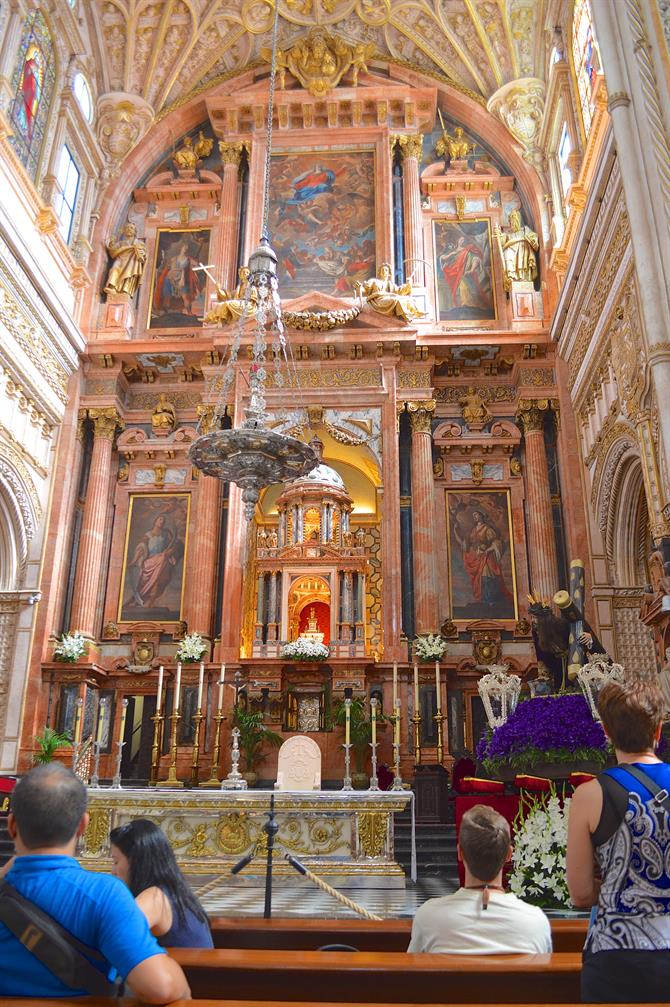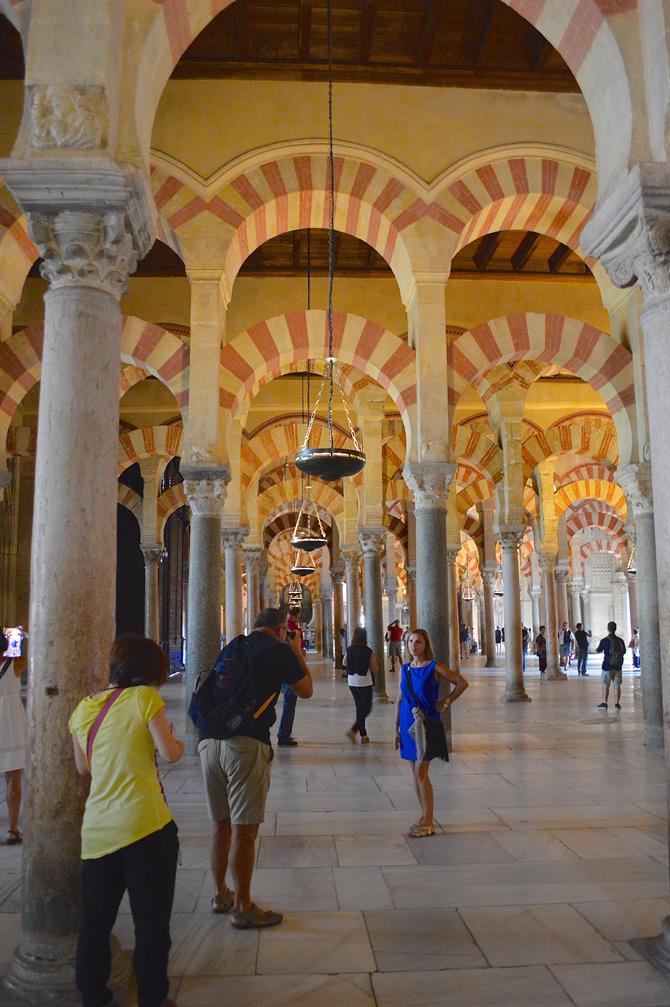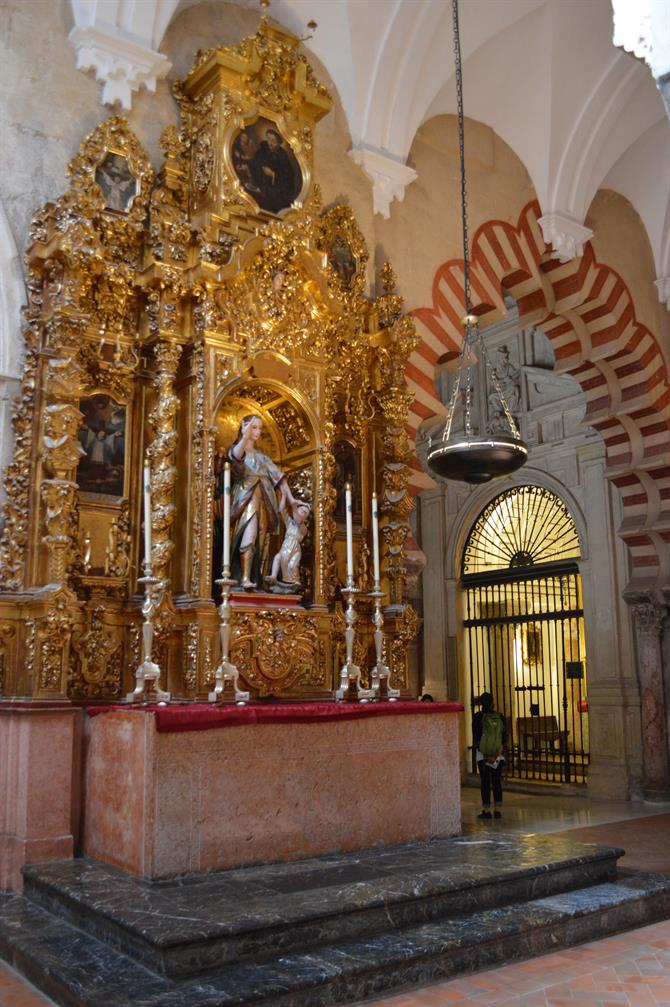When visiting Cordoba, there is one monument that you cannot skip: the Mezquita. No monument is more iconic of Spain's eclectic culture and religious evolution. Situated a stone's throw from the Jewish Quarter, this former mosque now houses a cathedral, which has resulted in some very impressive architecture.
A bit of history
The place where the Mezquita now stands used to house a Roman temple and after that, a Visigoth church. When the Moors arrived in Cordoba the church was split to serve both as a church and a mosque, but in the 8th century the Moors acquired the church and started constructing a mosque. The original building was very simple, but over the years different rules of Cordoba amplified the building to its current size.
In 1236 the Catholics conquered Cordoba. At first they left the mosque as it was, but in the 16th century king Carlos gave permission to construct a cathedral right in the heart of the mosque. When he visited the cathedral however, he supposedly said: "They have taken something unique in all the world and destroyed it to build something you can find in any city". Whether you agree or not, no one can deny that the Mezquita of Cordoba is a remarkable building that combines Moorish and Western architecture in a spectacular way.

What's there to see?
In an ideal world we would have all the time we want to discover the Mosque-Cathedral, but since there are plenty of other places to visit in Cordoba we have made a list of everything about the Mezquita that you simply cannot miss.
The Mezquita is situated in the heart of Cordoba’s historical centre, just a few steps away from the Alcazar de los Reyes Cristianos, a beautiful street in the San Basilio neighbourhood, known for it’s amazing patios and perfectly preserved Roman bridge.
When you approach the Mezquita, the heavily decorated gates and bell tower attract your attention immediately. The belfry used to be a minaret, but after it was damaged by a storm it was partially rebuilt in Baroque style. You can visit it at certain times during the day.
Fun fact: a law passed in 1958 limits the maximum altitude of buildings in Cordoba. It was put into effect to make sure that Cordoba's skyline will always be dominated by the towers of the Mezquita and other churches.

The patio of the Mezquita, with its orange trees and fountains, provides some much needed shade on hot days. It is a great place to rest for a while before or after your visit to the interior of the Mezquita.
Inside the Mezquita the red and white arches immediately attract your attention. They are what made the Mezquita so famous with the general public. Because of the uniformity that the arches bring to the mosque it appears as if there is no end to the building.

The main part of the cathedral is located in the centre of the mosque, with different chapels along the outer walls (the chapels are closed for the public, but you can see them through the gates). The carved wooden benches and the sanctuary are especially remarkable.
However, the most interesting part of the Mezquita is where the cathedral and the mosque meet. Seeing the subtle elegance of the Moorish styles next to the Gothic and Baroque architecture is somewhat of a surreal experience.

At the far end of the Mezquita you can visit an exhibition of artifacts and reliefs that were recovered during excavations. The treasures acquired by the cathedral over the years are also displayed.
The Mezquita is an icon of Spanish culture and religion, going from the Romans, over the Moors, up to present-day Christians and Muslims. When you're in Cordoba, you cannot miss out on this unique building!
Practical information
Entrance tickets for the Mezquita and the bell tower can be bought in the patio. If you would like to go on a guided tour you can by your tickets on location, or you can buy them online in advance (the tour includes visits to other important landmarks of Cordoba).
Entrance fees
Mezquita
Adults: €10
Children (aged 10-14): €5
Children (aged <10): free
Bell tower €2
Opening hours
The opening hours change per season. You can find an up-to-date document here.
Important: as the Mezquita is still in use, access may be restricted during certain religious events (for example Easter).
